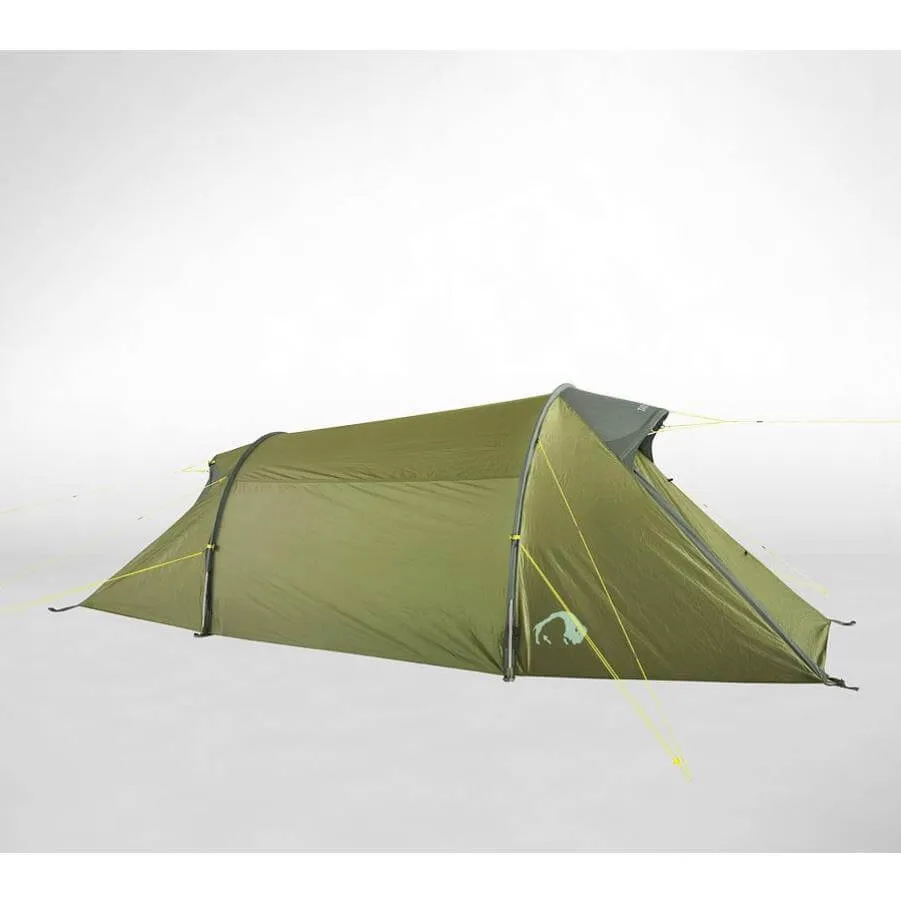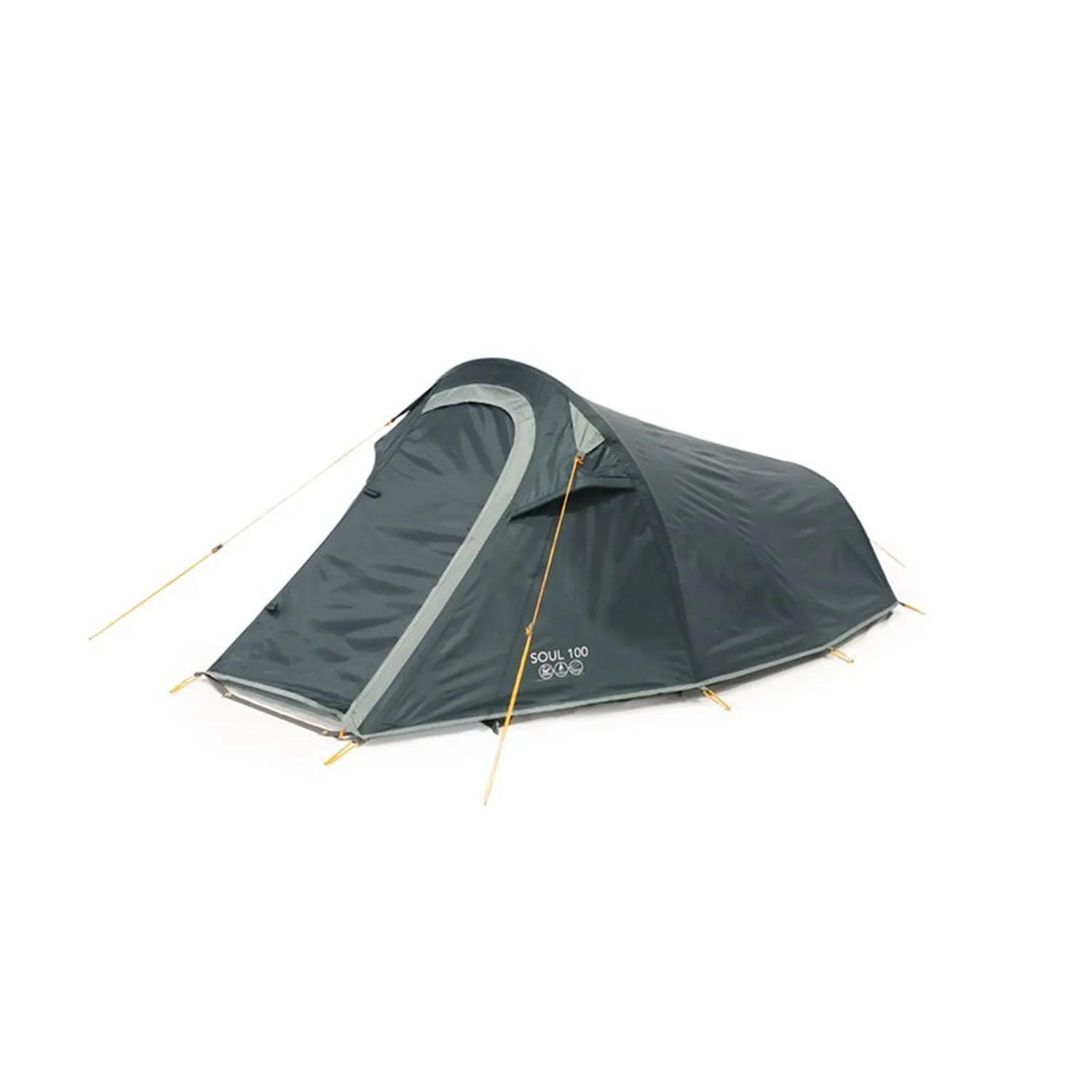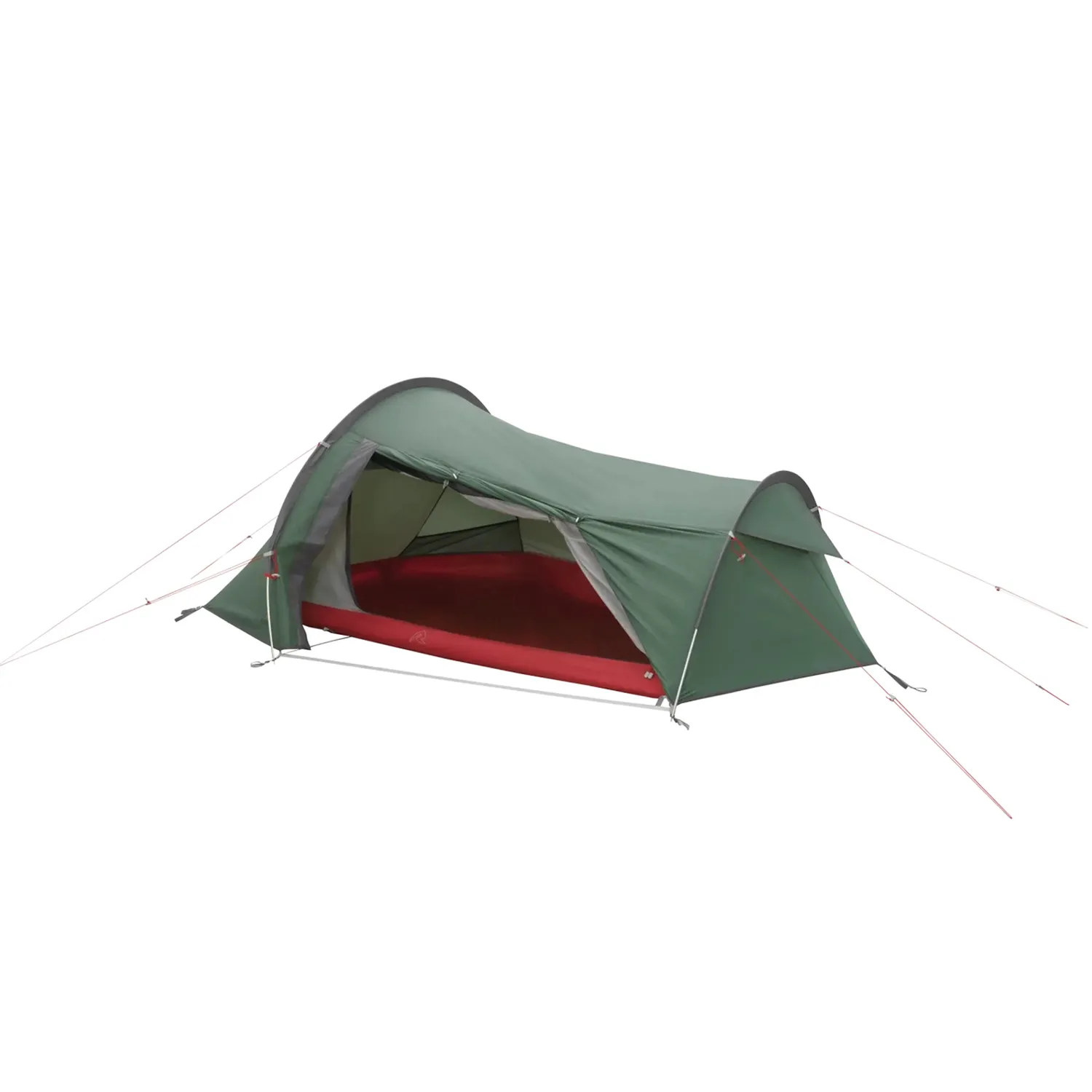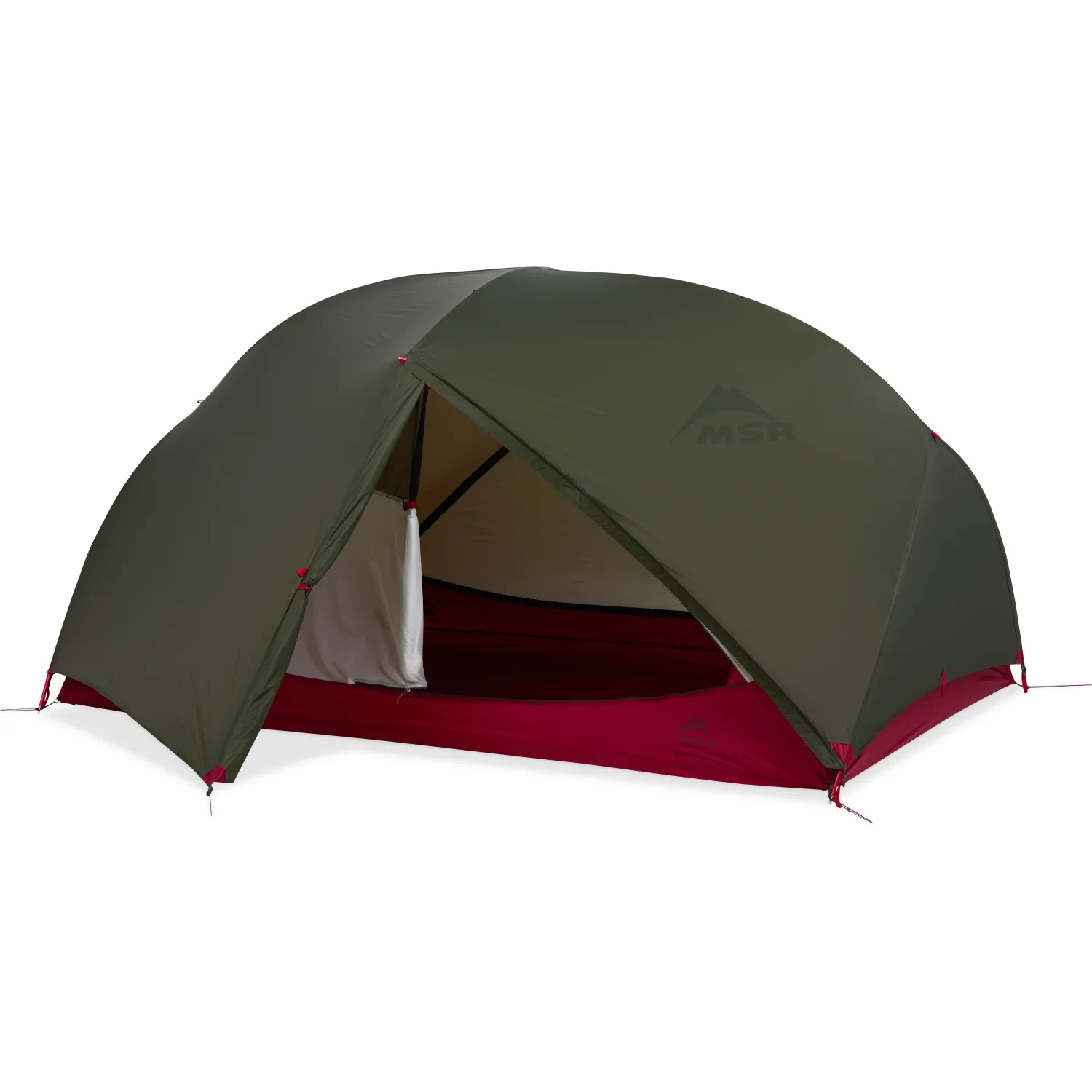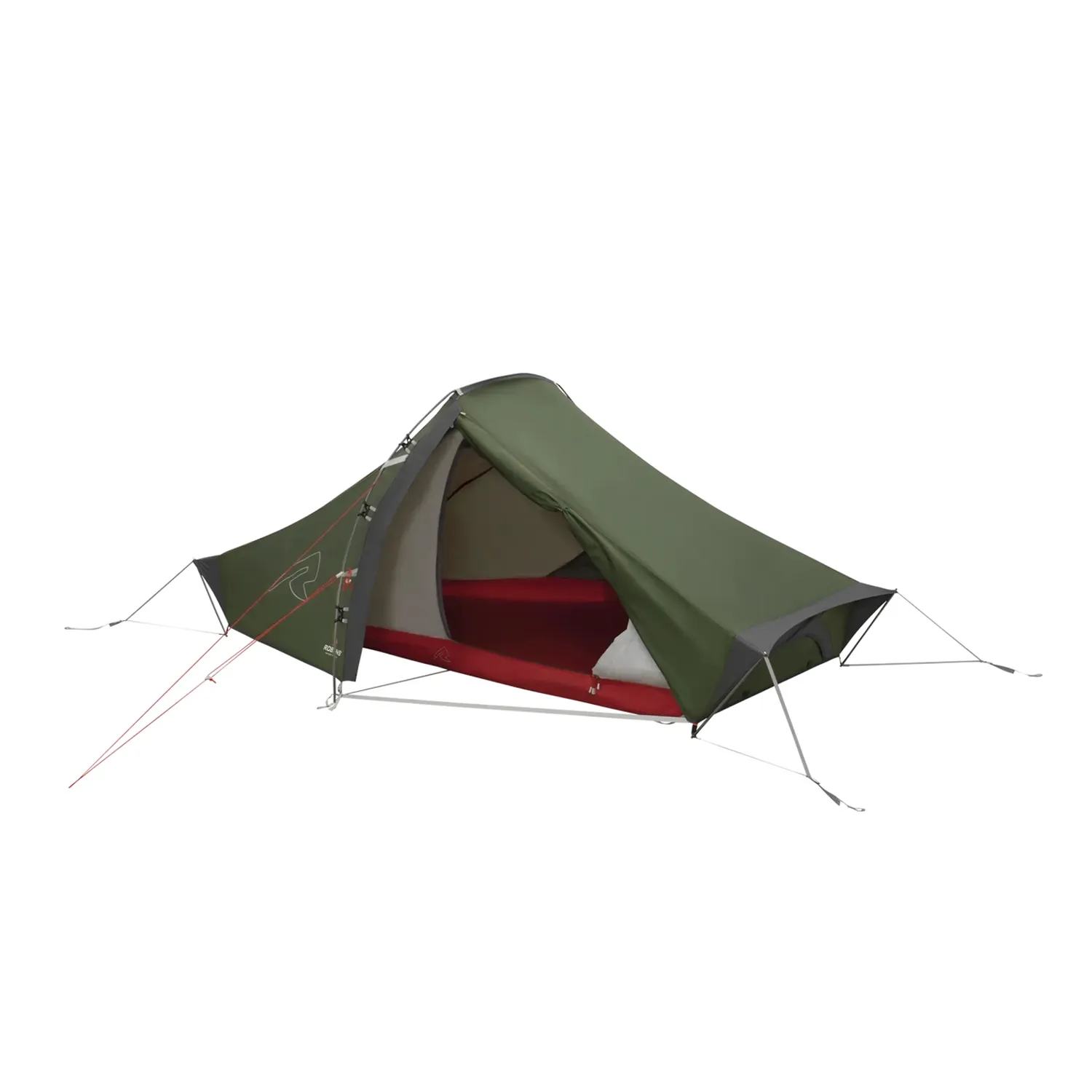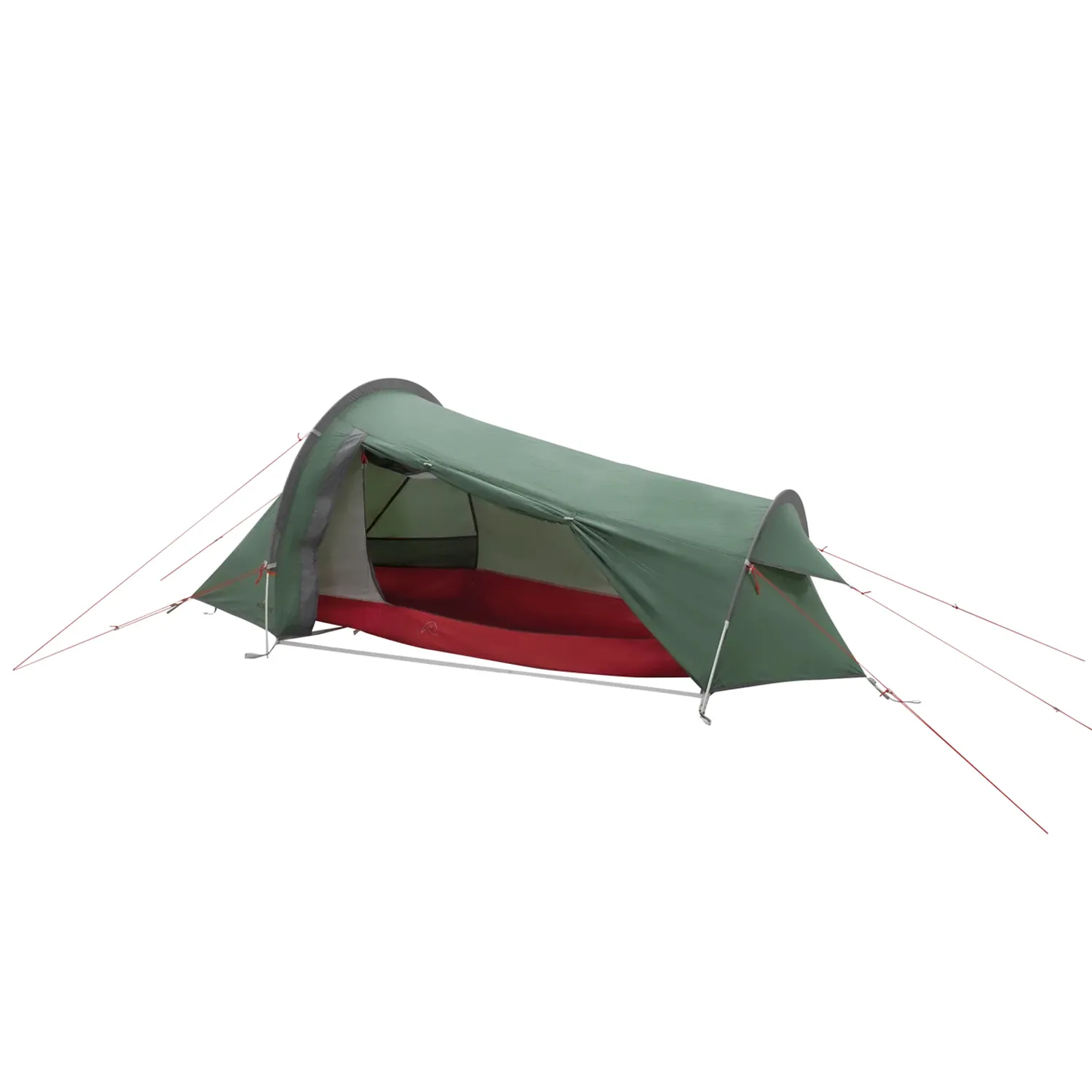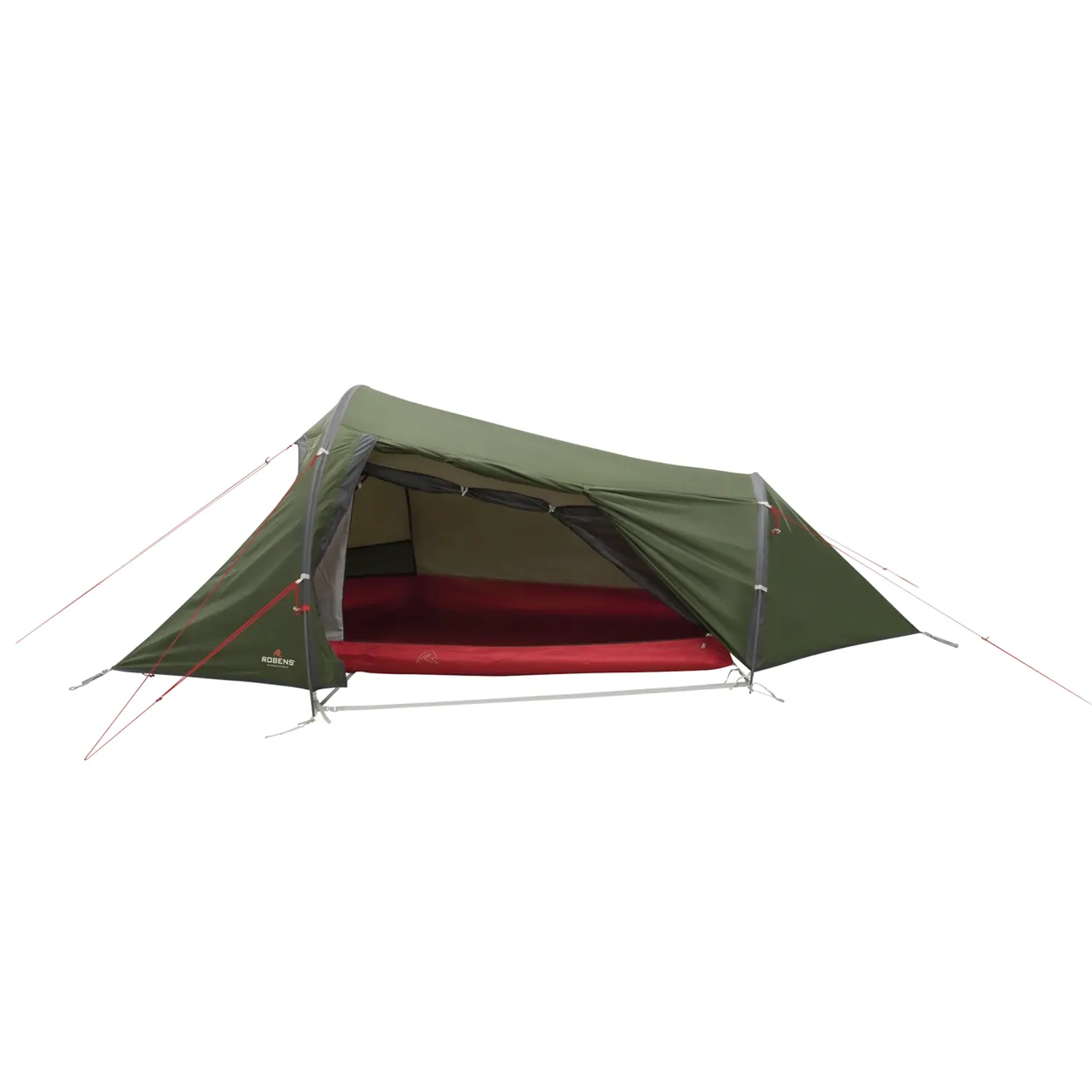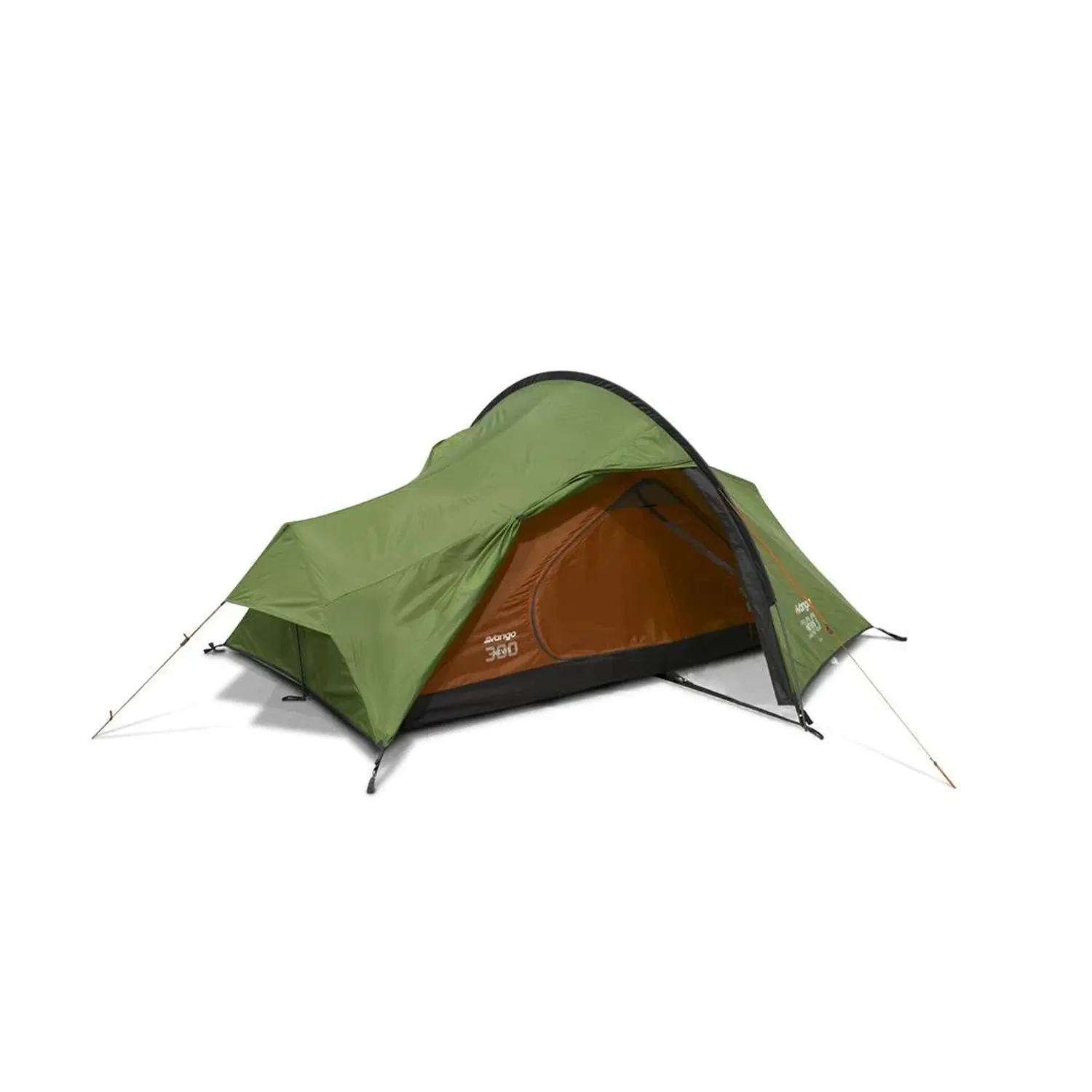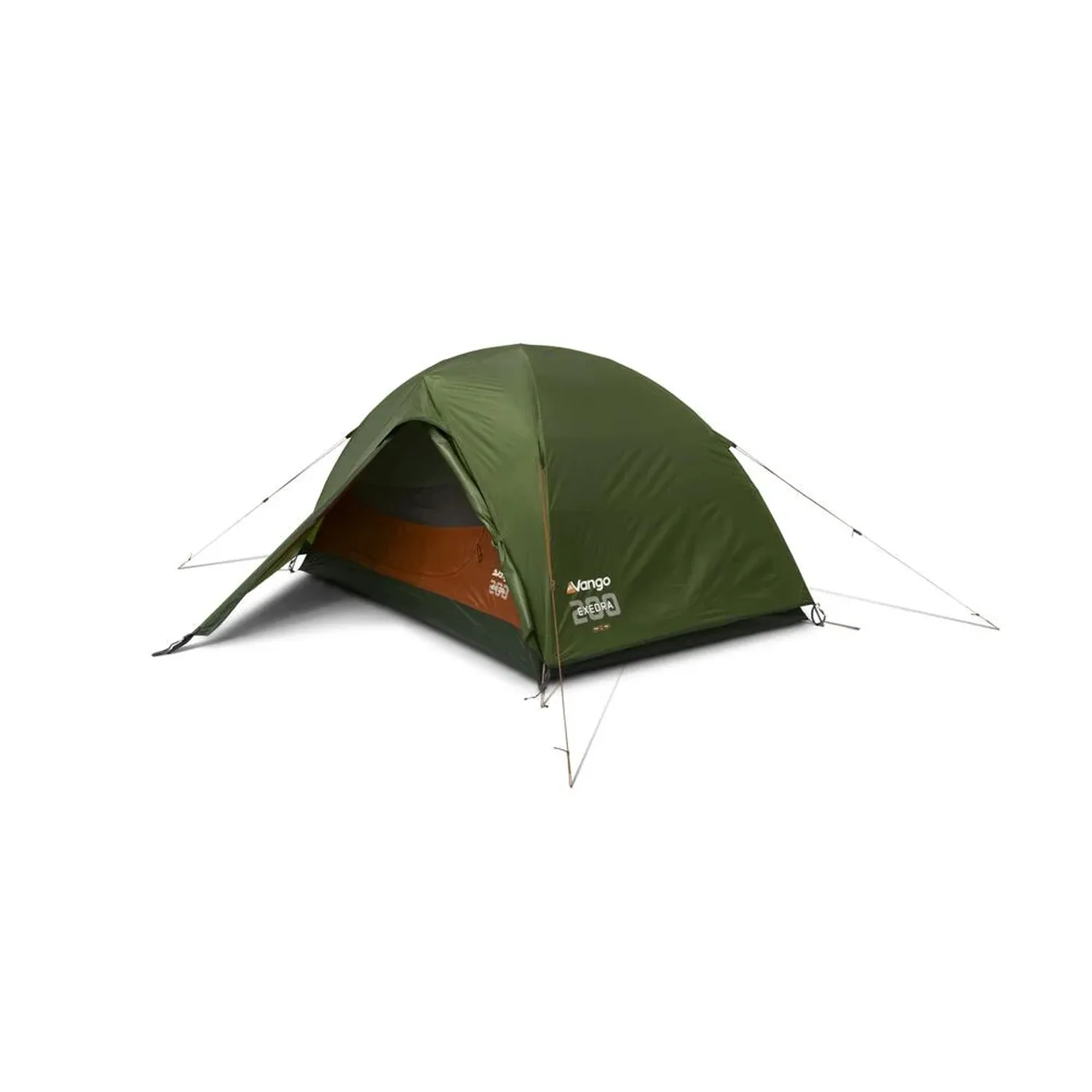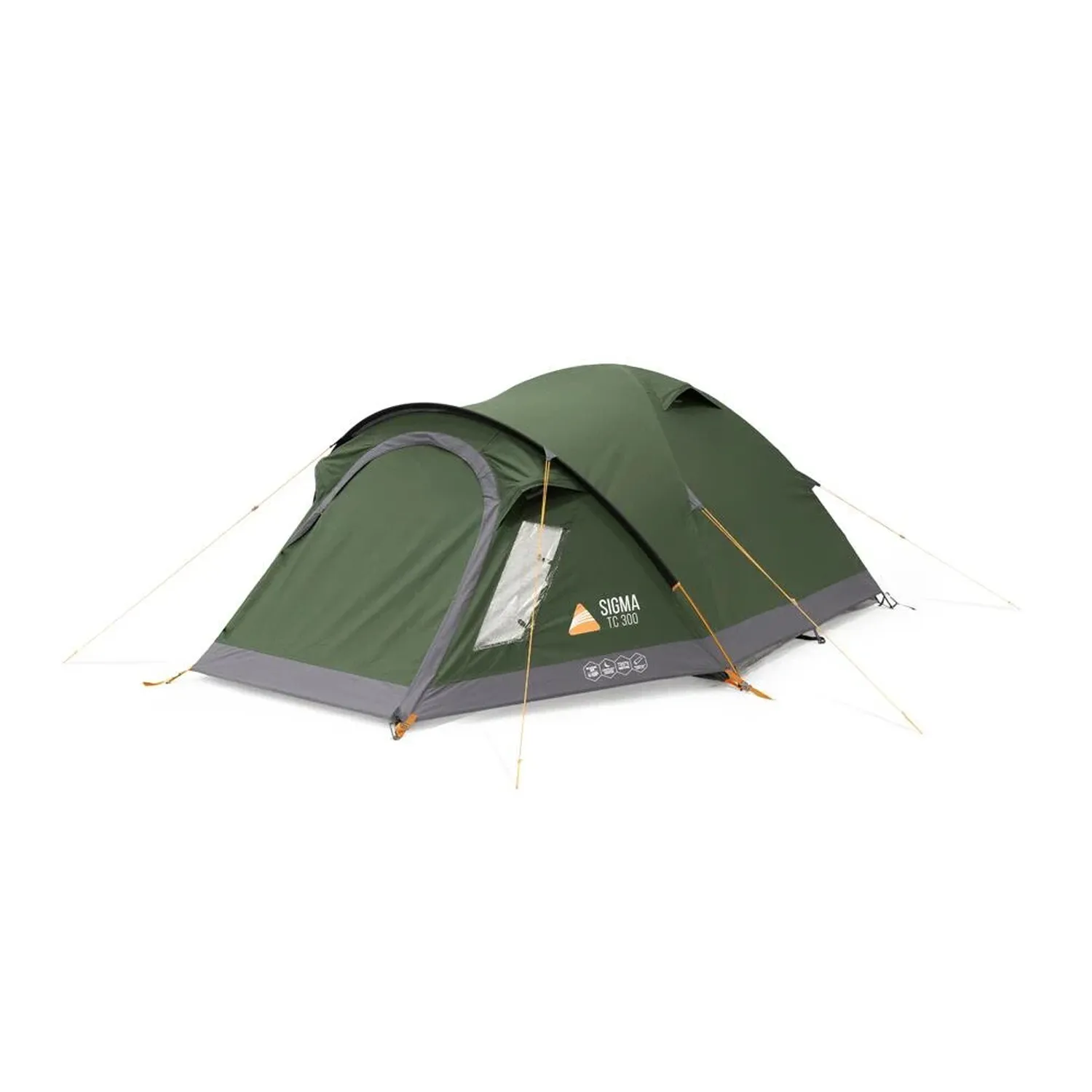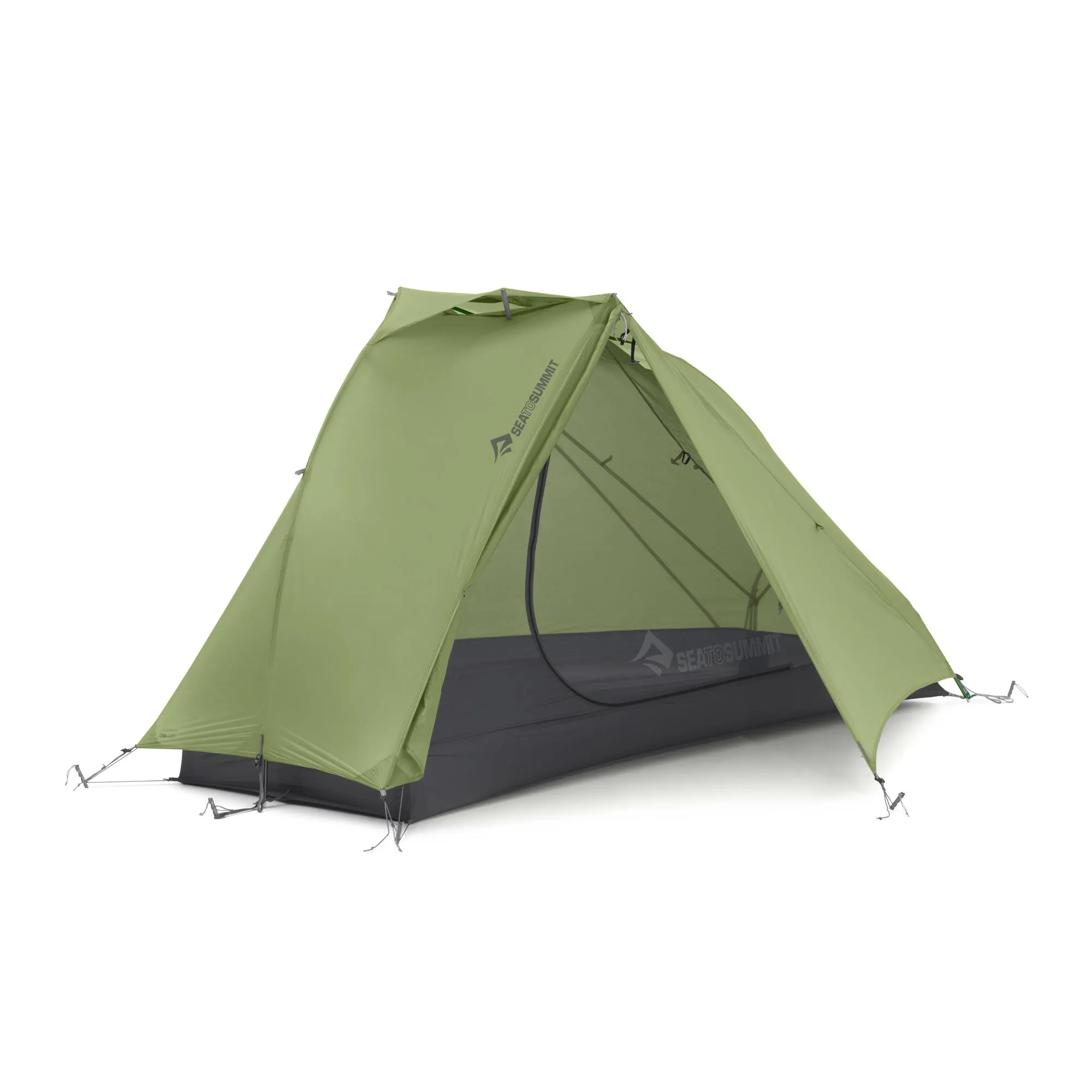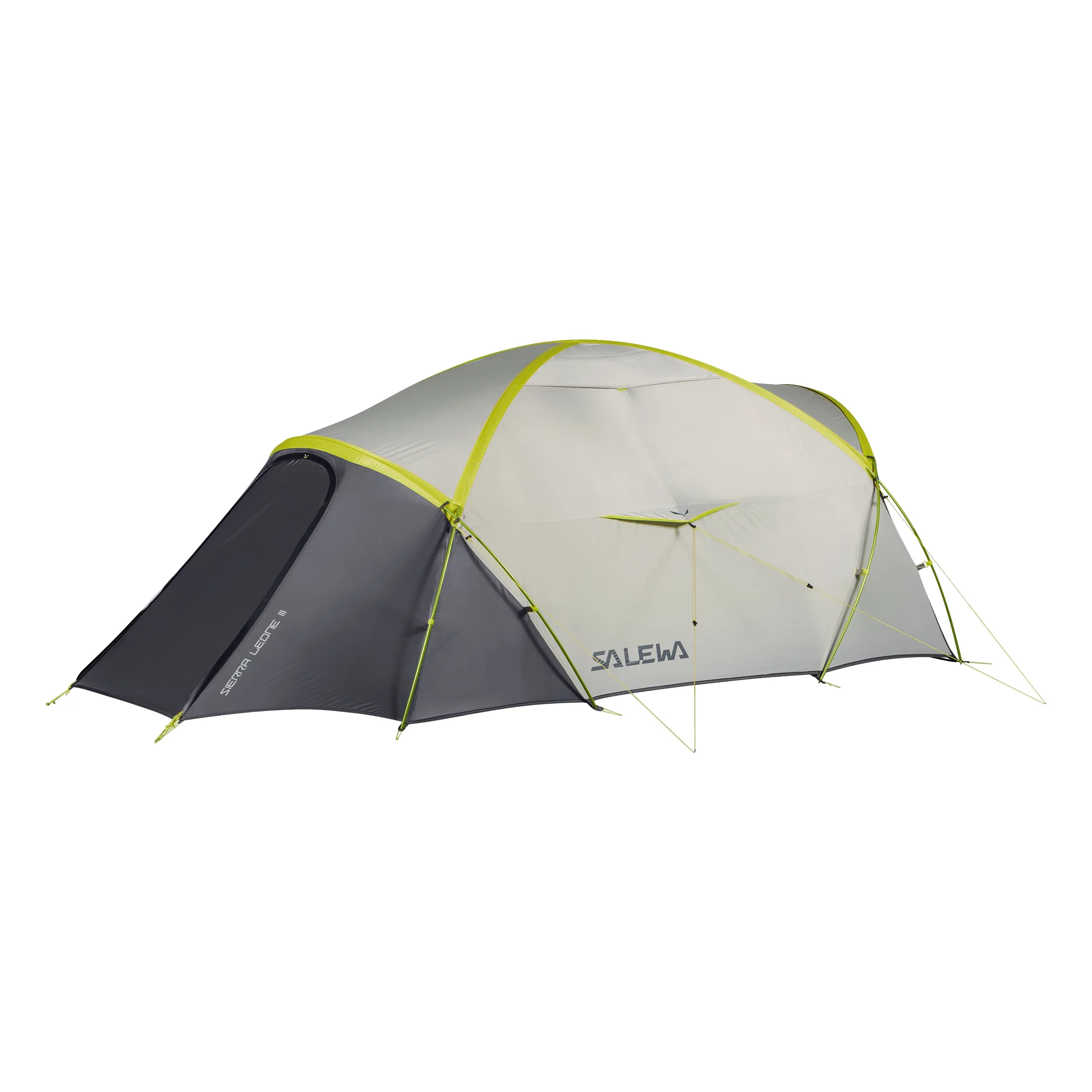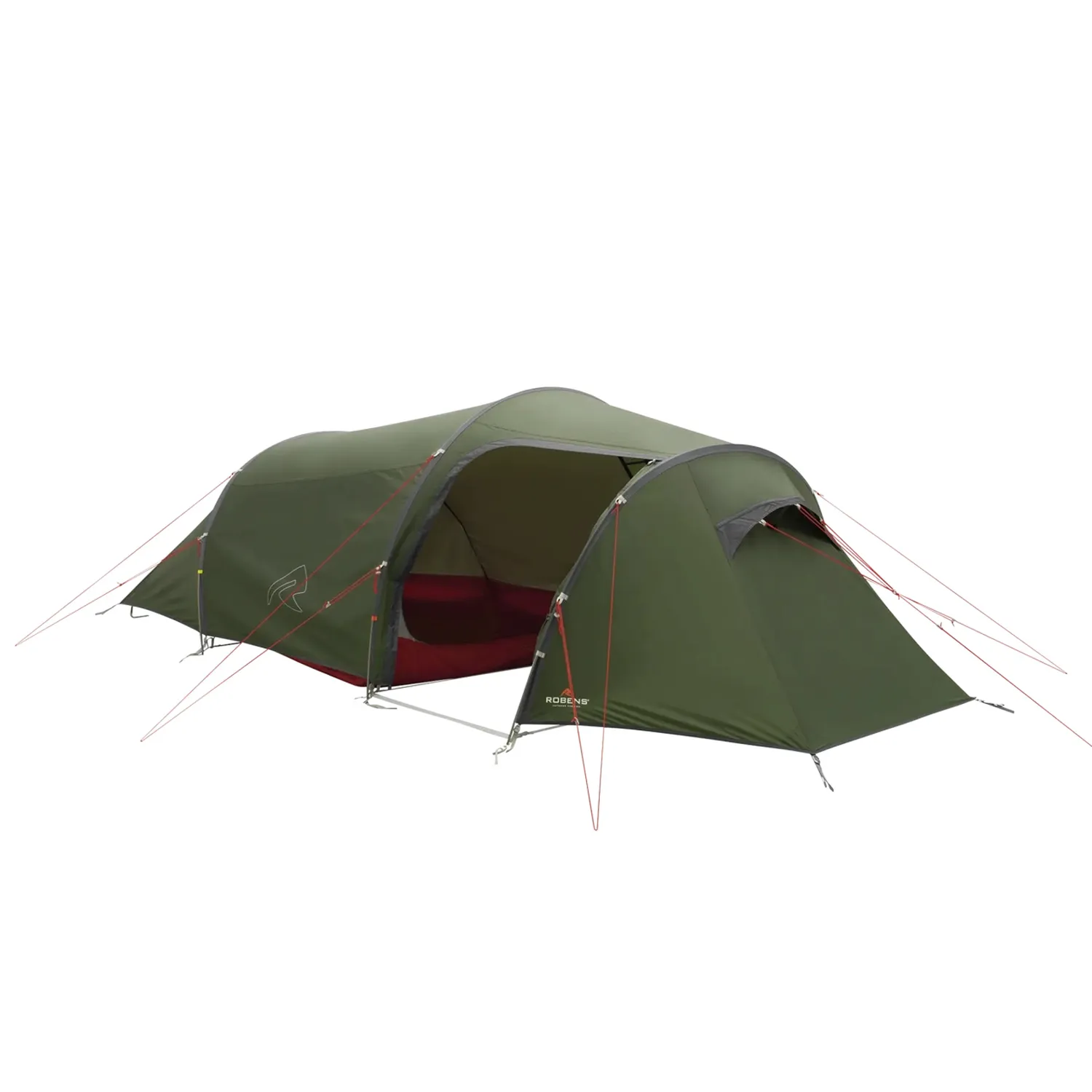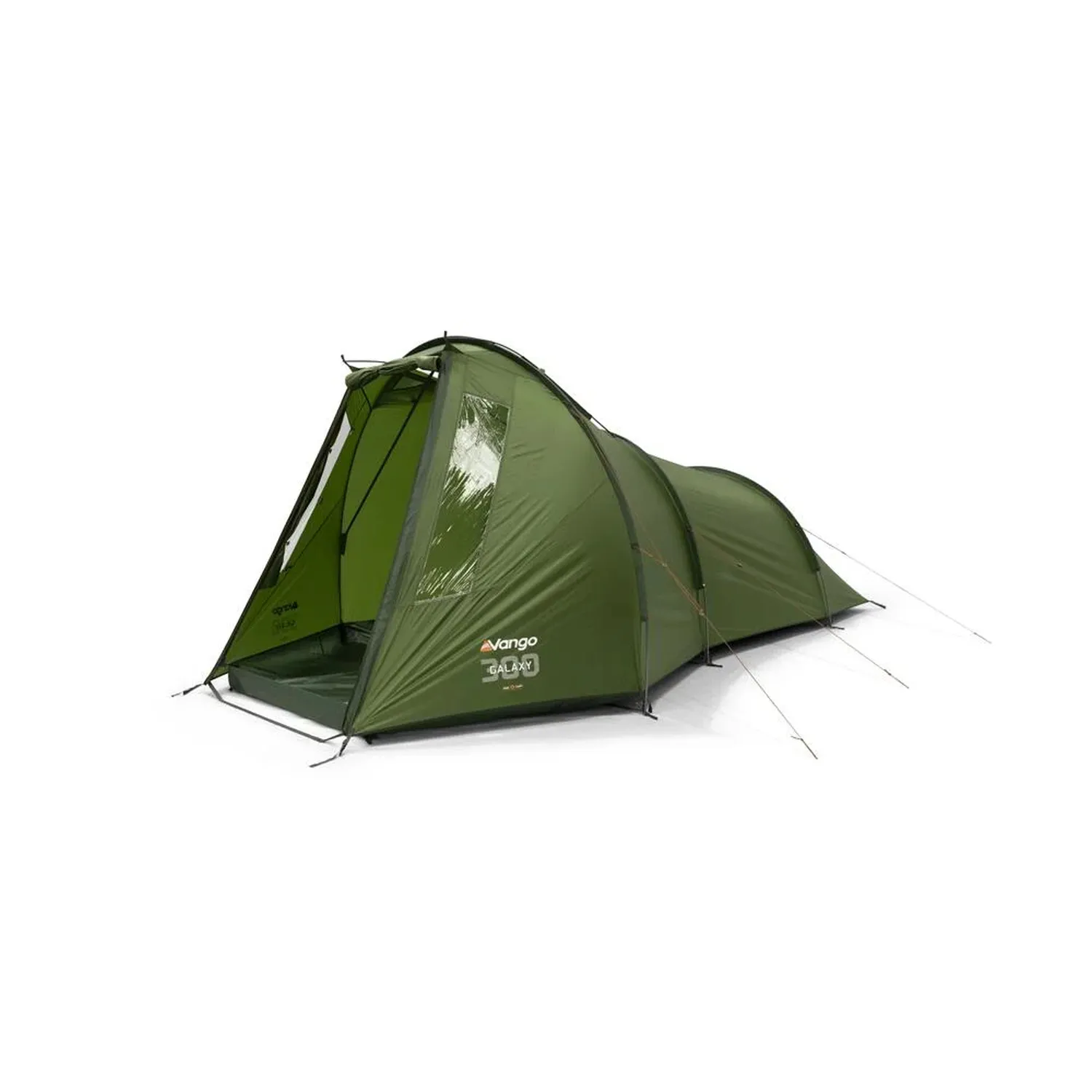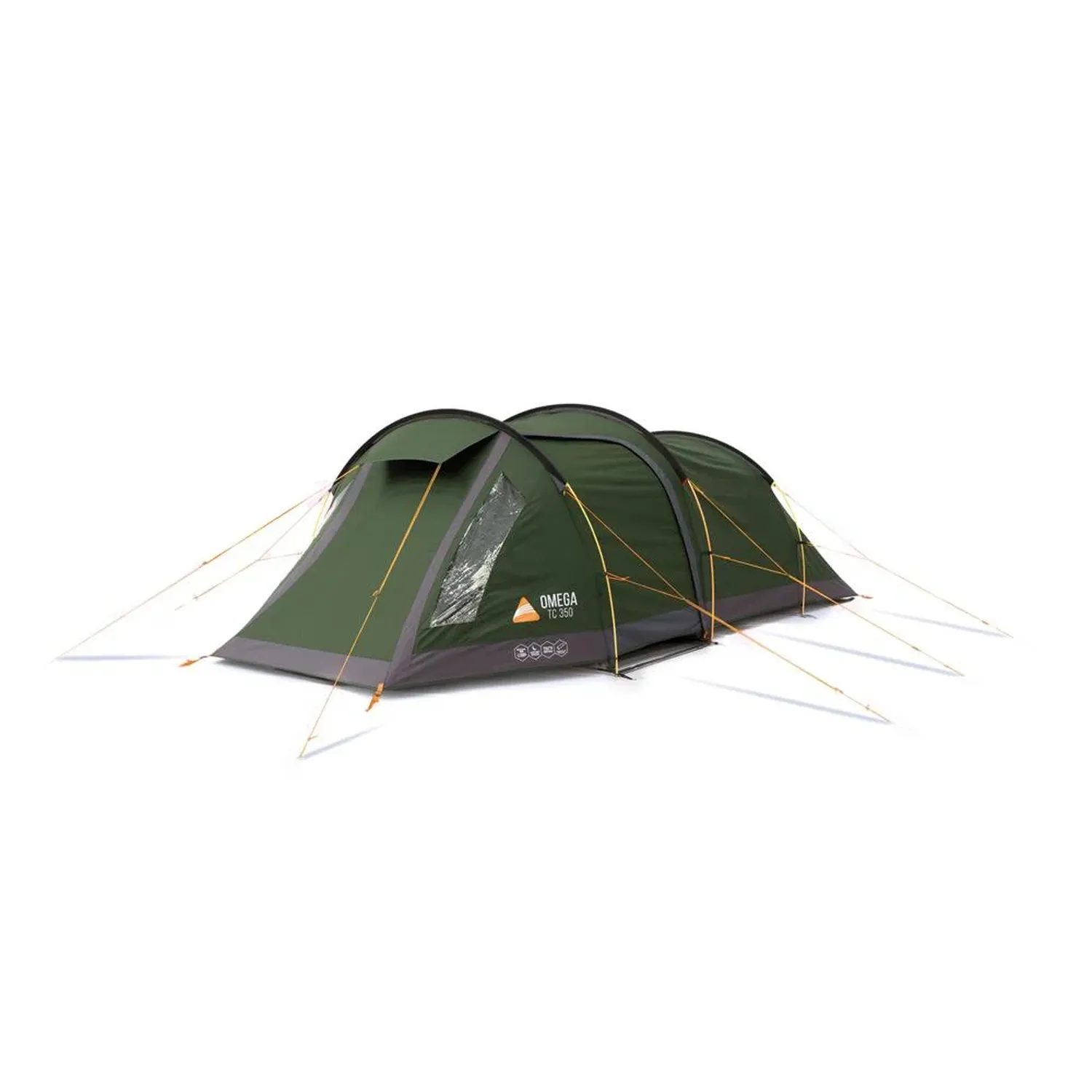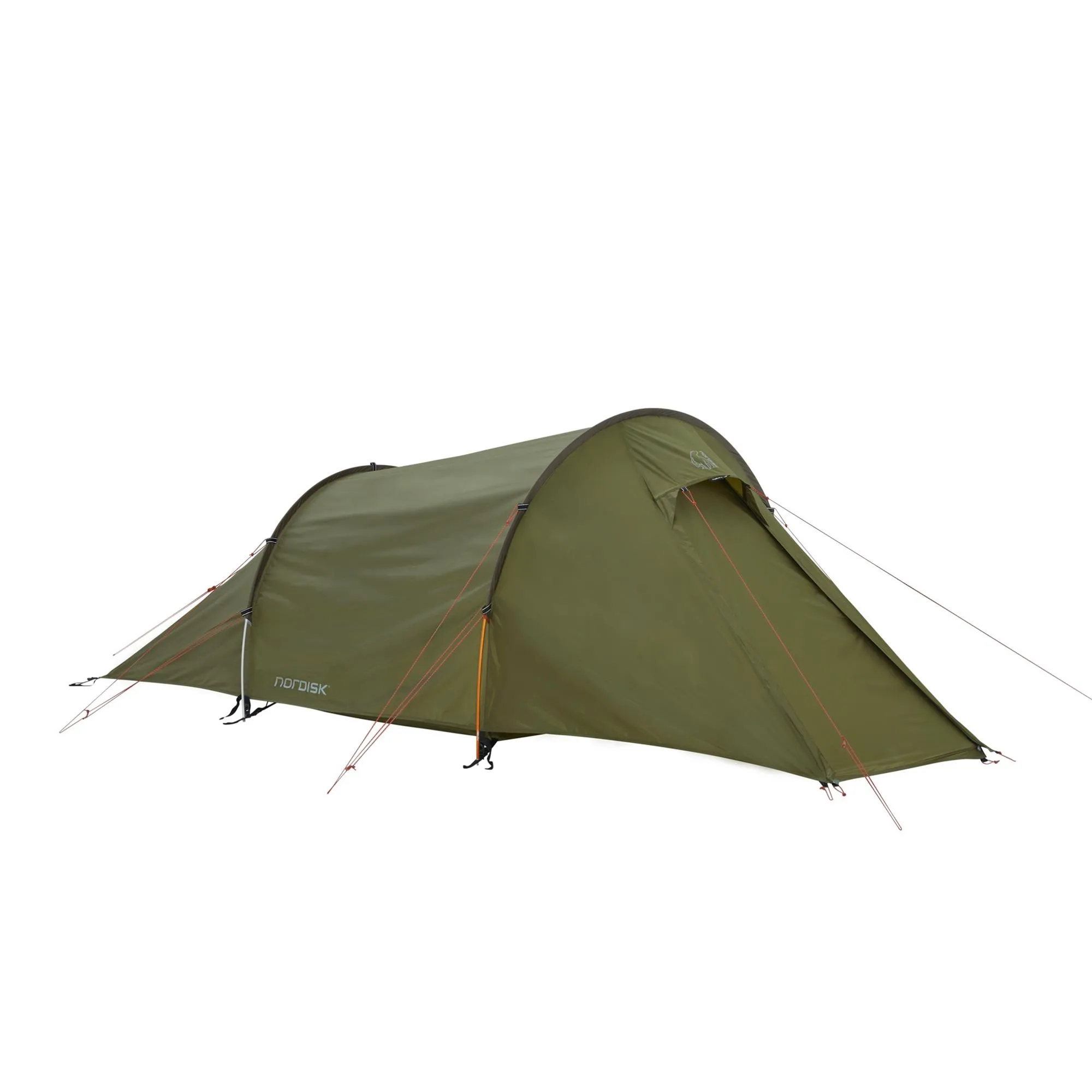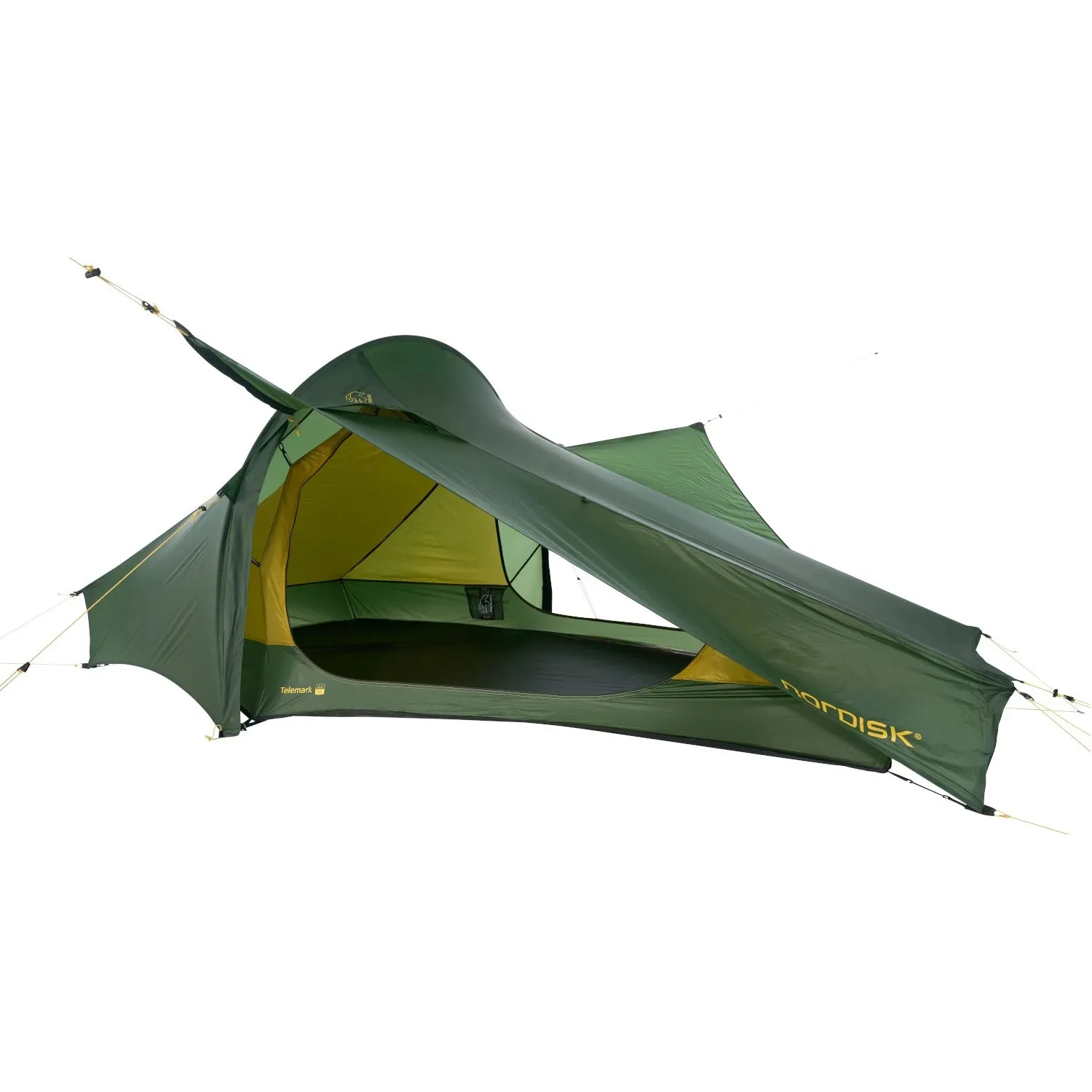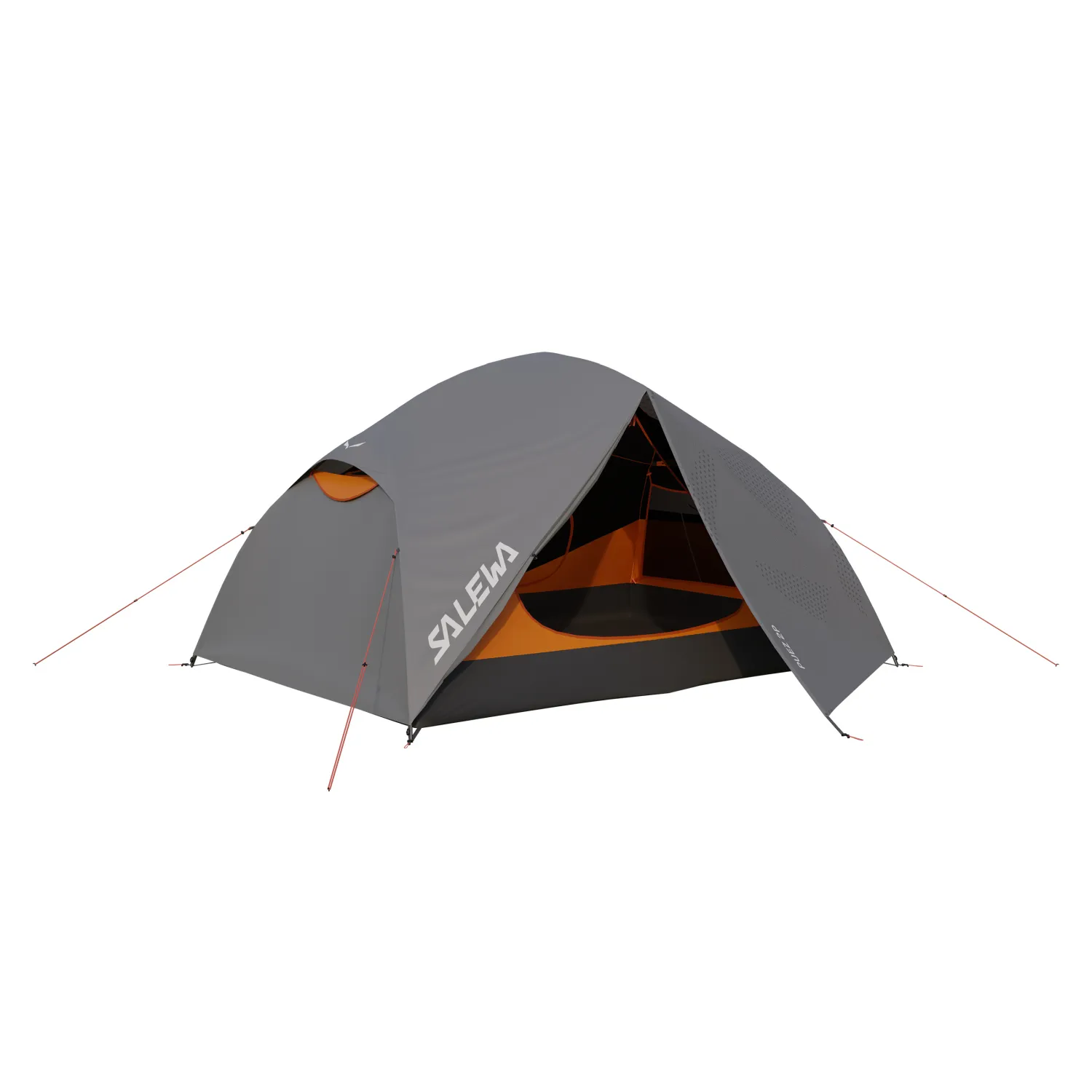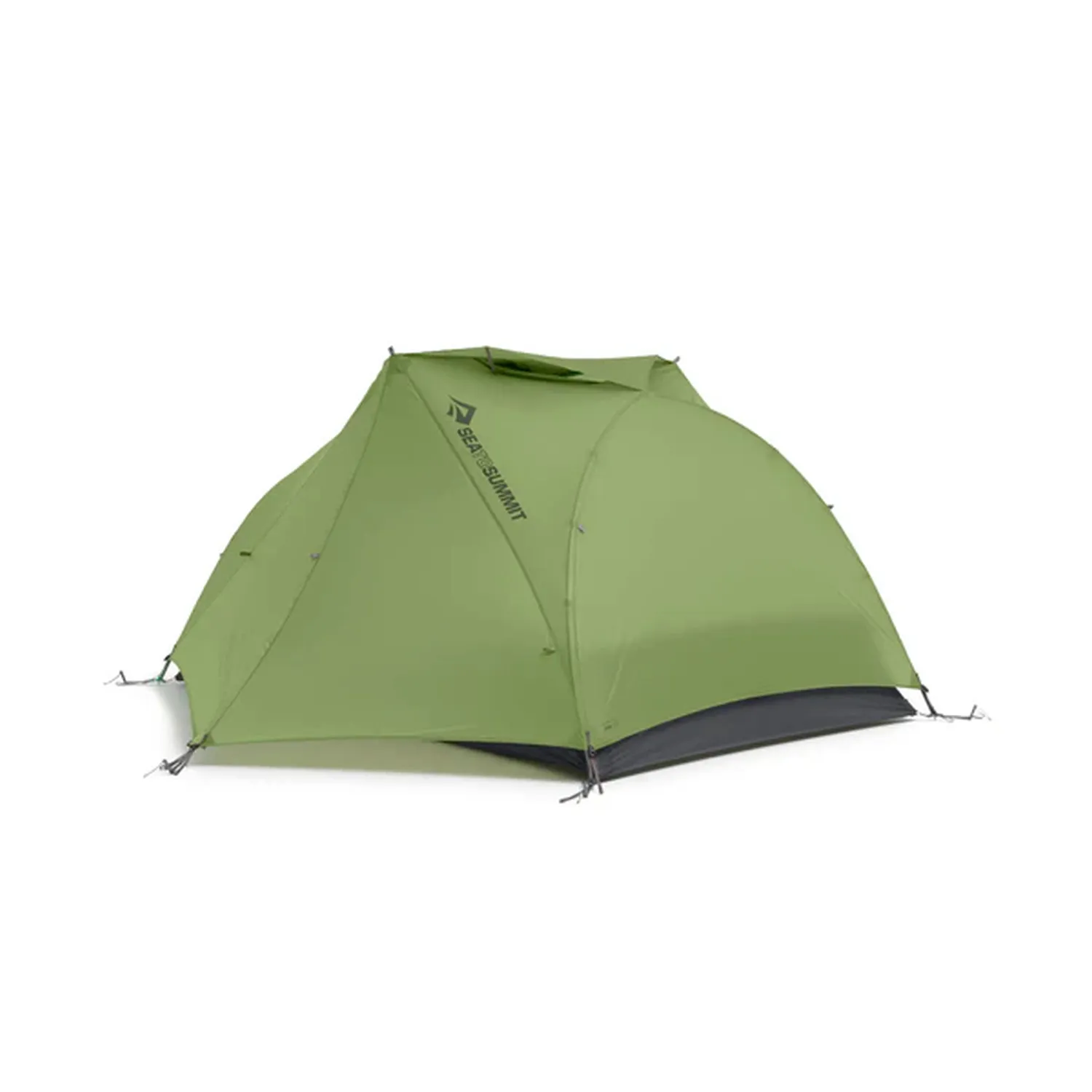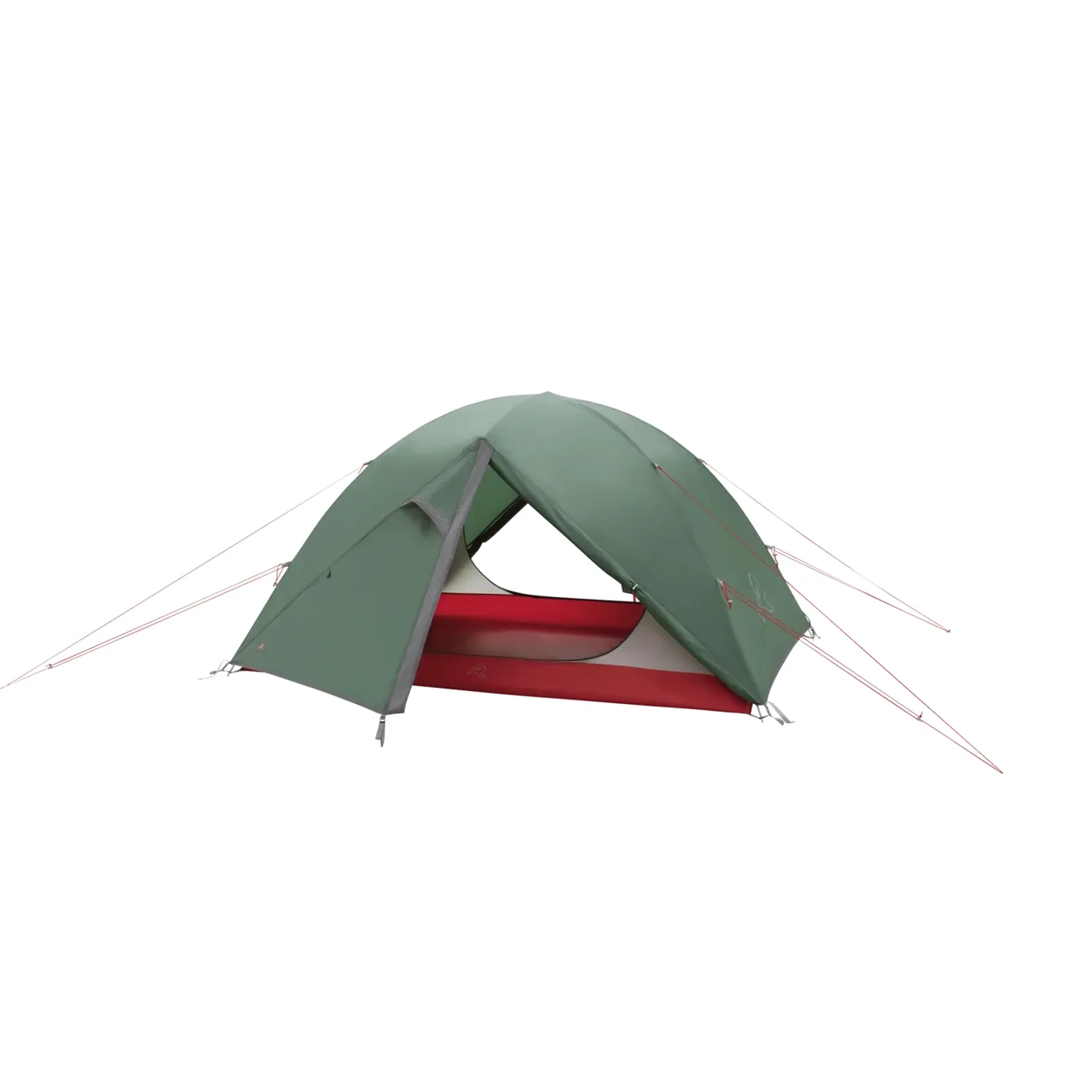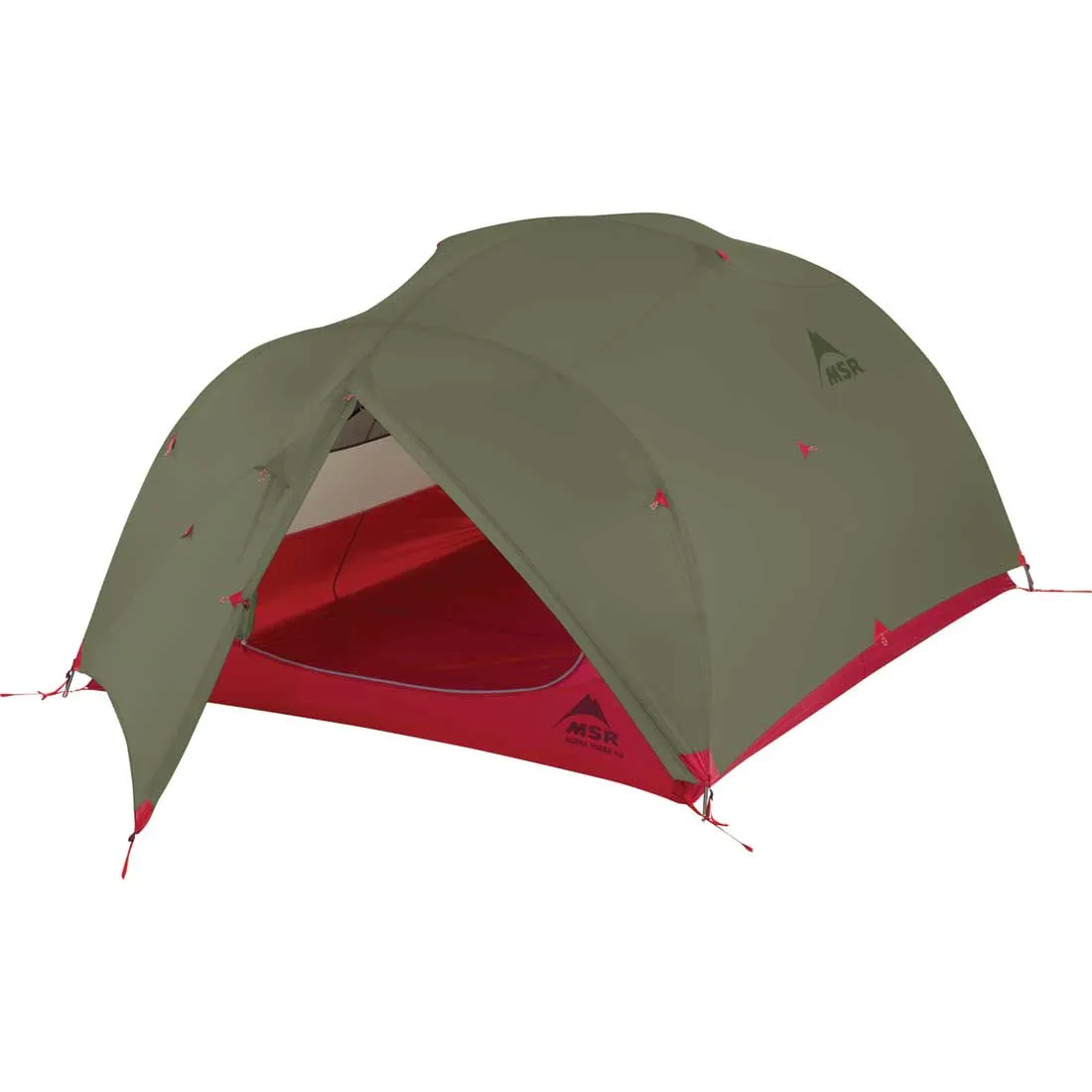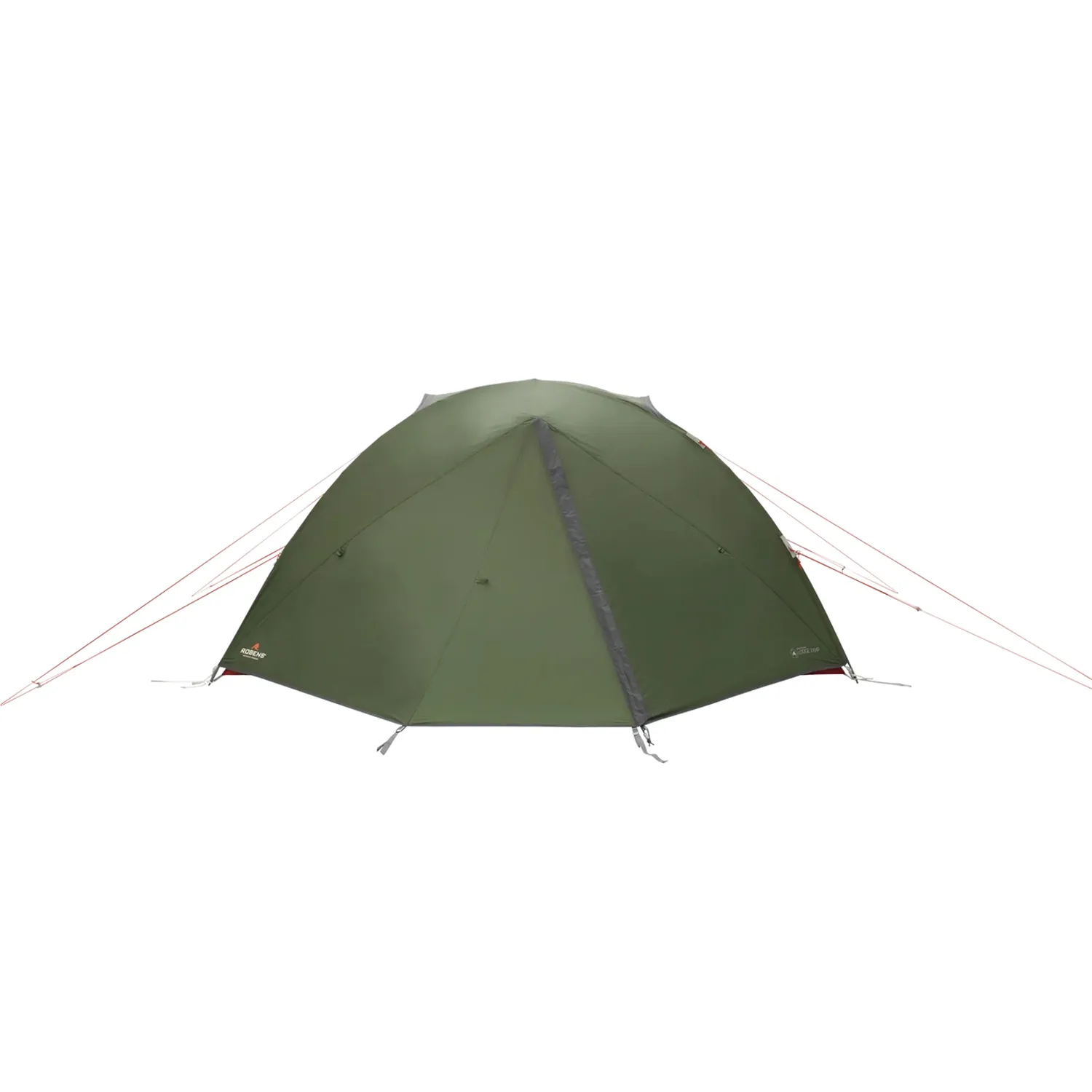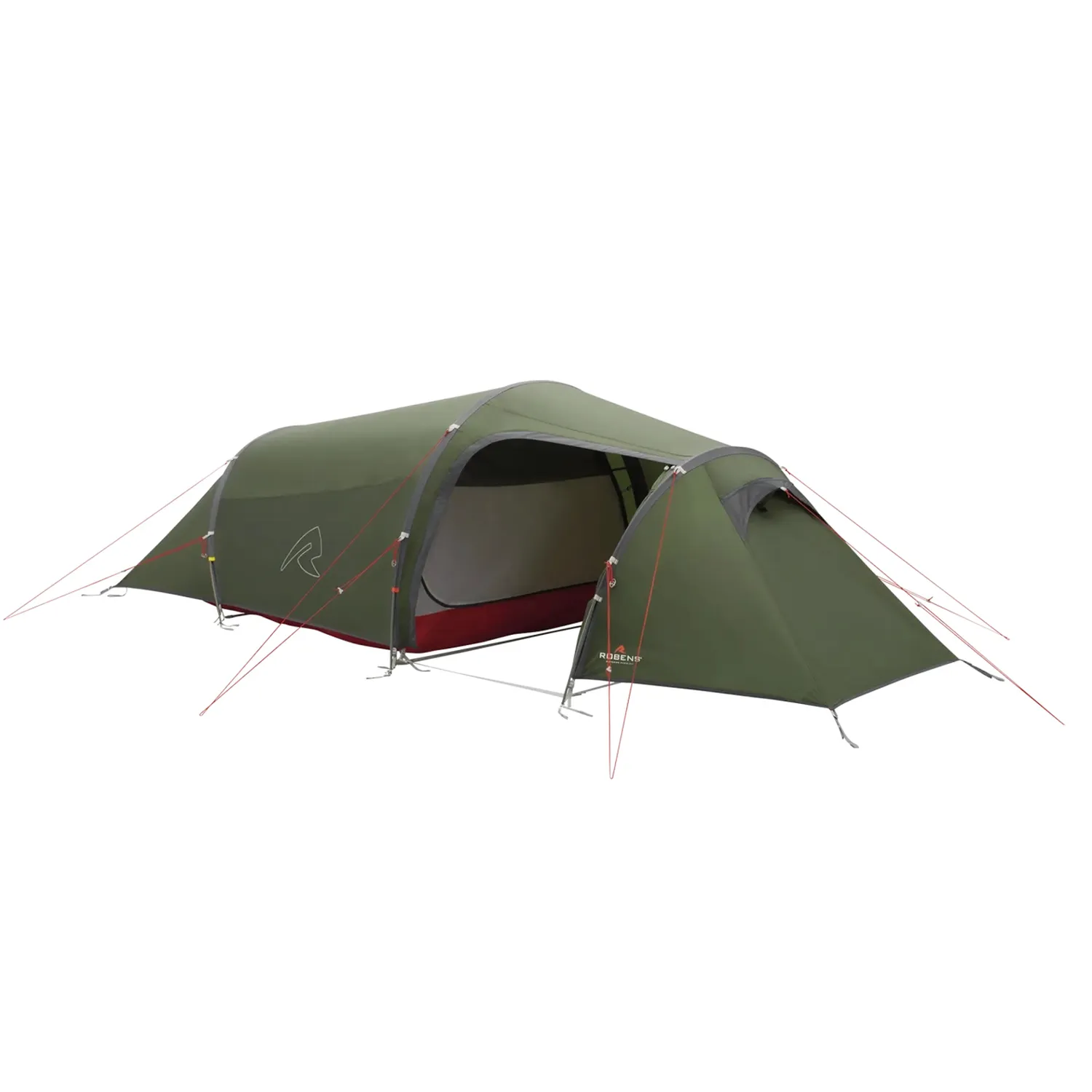Trekking tents
Trekking tents
A lightweight trekking tent for hiking and exploring
Whether you enjoy canoe trips, are a keen trekker, climber, cyclist or hobby hiker - your tent shouldn't weigh much and should ideally fit in your rucksack.
Trekking tents are not only very compact and lightweight, but also particularly robust, making them perfect for your next adventure in the wilderness!
Features of good trekking tents - what should I look out for?
The term "trekking" stands for a multi-day hike (through the wilderness) where comfortable accommodation such as a hotel etc. is dispensed with. Instead, you sleep in a tent - preferably a trekking tent.
This tent is carried in the trekking rucksack on your back or attached to it during the entire hike. You set up the tent almost every evening and take it down again in the morning. Trekking tents are therefore characterised by their low weight and small pack size. However, as they are sometimes exposed to rain and strong winds, they are also robust and can withstand harsh weather conditions.
Waterproof trekking tents
It goes without saying that your trekking tent should be waterproof. Nothing will cut your trip short faster than a wet trekking tent, clothes and sleeping bag that won't dry.
Especially if you are travelling in less comfortable seasons or in regions where it rains more frequently, the water column is (almost) the measure of all things.
The water column indicates in mm how much precipitation the tent can "withstand". For example, a tent with a water column of 1500 mm is already considered waterproof, while a water column of 3000 mm is recommended in areas with heavy rainfall.
Sealed seams also help to ensure that your trekking tent stays reliably dry.
Lightweight trekking tents
Trekking tents generally differ in shape, size and weight. When buying a trekking tent, pay particular attention to the weight. After all, you need to be able to easily transport the tent on a hike or canoe trip without getting back pain or sinking.
As a rule, the weight of a trekking tent for 2 people is between 2.5 and 3.5 kilograms.
Ultralight trekking tents must not weigh more than 1 kg per person. Our lightest 1-person tents remain under 2 kg at approx. 500 g and therefore make it into this category.
Because when it comes to trekking, the lighter the better!
Tent size
Although trekking tents are smaller than normal tents, because they should remain nice and light for transport, there is still room for 1 - 2 people up to 3 - 4 people in our tents. There is usually a 2-person trekking tent or a 3-person trekking tent. This means that trekking tents are also suitable for families or holidays with a dog. The size of tent you need depends on how many people you are travelling with, how much luggage you are taking with you and what tent weight you are prepared to carry.
Of course, the larger the tent, the more comfortable it is. A sleeping area of 60 to 65 centimetres is usually planned for one person. This is roughly the width of a standard sleeping mat. But: the more space, the higher the weight and the larger the pack size.
A trekking tent with standing height is not only interesting for tall people. Please note that the weight and pack size increase accordingly.
Our smallest pack size is 11 x 22 cm and fits easily into any rucksack. Is the pack size of your tent of choice too big for your rucksack or is there no space left? Many trekking tents can also be attached to your rucksack for easy transport.
Tent shape
There are so many different tent shapes. Tunnel tents, dome tents, geodesic tents or ridge tents are generally suitable as trekking tents.
Tunnel tents are quite wind-stable thanks to their narrow and reasonably aerodynamic shape and the pole arches. Provided, of course, that you have braced the tent well. This type of tent offers you more space - which is particularly practical if you are not travelling alone. Tunnel tents are also easy to pitch, which you will be happy about every day.
Dome tents can also be set up quickly with the poles that cross in the centre of this sturdy construction. There is no need to brace the tent. Drawback: Compared to the tunnel tent, dome tents offer less space, especially for taller people.
The geo tent is the most stable tent of the variants mentioned so far. It is extremely storm-proof and weather-resistant - but also somewhat heavier than tunnel or ridge tents. It also takes a little longer to pitch a geo tent. Nevertheless, this tent is particularly attractive for winter - its shape means it can withstand snow well.
Ridge tents are quick to set up and are generally very light. They are comfortable to carry and the effort involved in setting them up is also limited. However, they also have two disadvantages compared to other tent shapes: Space utilisation is rather poor and they are also not as wind-stable.
The right material for lightweight trekking tents
The material of trekking tents must be robust.
It is therefore usually made of polyester or nylon or ripstop nylon.
Both materials are tear and abrasion resistant. Polyester also offers a high water column and dries quickly. It is also cheaper than nylon. Nylon offers better UV protection and is extremely light. Ripstop nylon reduces moisture expansion thanks to stronger weft and warp threads.
A polyurethane or silicone tent coating is also used. Both coatings are considered to be of high quality and flexible. The advantage of a polyurethane coating is that it is cheaper and allows seams to be glued. In contrast, no seam bonding is possible with a silicone coating. On the other hand, silicone coatings offer a high level of UV protection and are particularly light and tear-resistant. High UV protection also means higher UV resistance.
Cotton, on the other hand, is not recommended as a material for trekking tents. The material is too heavy to carry around for days on end. Once wet, it dries slowly and is therefore even heavier.
However, a small amount of cotton does no harm; on the contrary, it ensures good air circulation in the tent.
Our 5 tips for trekking tents
- Less is more.
The trekking tent that the expert advised you against just because it was 500g heavier than the more expensive comparative model, do you also consider it to be lightweight? Of course. After all, you're about to set off on your trip. After a day's trekking at the latest, you'll be cursing yourself for your decision. The rule is: the lighter, the better. - Pack minimalistically.
This also applies to packing your rucksack. Do you need to take the whole shower gel bottle with you or will a smaller one or a bar of soap do instead? Wouldn't two jumpers be enough instead of three? Pack light - then you'll have to carry less. We recommend that your luggage should not weigh more than 5kg in total. - The route planner on your smartphone is just a nice addition.
The battery is flat, your mobile phone has fallen into the stream or you've had no reception for hours? How good that you still have your "analogue" maps to help you find your way. - Choose your sleeping spot wisely.
When looking for a place to spend the night, pay attention to whether there are many game tracks in the area. After all, you don't want to find yourself face to face with a mum wild boar when you get up. You should also avoid streams or ponds if you don't want to be eaten by mosquitoes, and a place that allows you to look out in all directions can give you a certain sense of security - i.e. there are no mountains, forests or similar in the immediate vicinity. - Climb slowly.
As a pro you already know this, but as a beginner you may find this tip useful. On your first day, don't aim to complete a mammoth part of the route straight away. Instead, slowly increase your distance per day and you will enjoy your trip more (and for longer)!
Trekking tent or camping tent? The differences at a glance
Are you wondering whether a simple camping tent in the cellar wouldn't do for your planned hiking tour? What are the differences?
The classic camping tent offers plenty of space. Depending on the size, it can accommodate up to 8 people or more. But you notice this size when you lift the tent. Not to mention having to carry this monstrosity on your back for days on end.
The material is water-repellent and, depending on the water column, can withstand long downpours.
There is considerably less space in the trekking tent than in a comparable camping tent - but it is also a lot lighter. After all, it has to be carried every day.
The tents are also particularly compact, so they fit easily in or on your rucksack. Trekking tents are made of more robust material that can withstand less favourable weather conditions. This robustness also benefits the fact that the tents have to be set up and taken down frequently.
Practical: Trekking tents are usually equipped with awnings or vestibules. Here you can store your luggage, which would only take up space in the small interior.
Conclusion: You can certainly use your camping tent for trekking. But only if you are a fan of back pain and want to cancel the trip after one day.
What trekking tents lack in space, they quickly make up for with their small pack size and low weight.
| Trekking tent | Camping tent | |
|---|---|---|
| Tent weight | Light | Heavier |
| Space | Smaller | Larger |
| Robustness | High | Normal |
| Awning / vestibule | Included | Sides included |
| Comfort | Given | Higher |
Frequently asked questions about trekking tents
What is a trekking tent?
The term "trekking" stands for a multi-day hike (through the wilderness) where comfortable accommodation such as a hotel etc. is dispensed with. Instead, you sleep in a tent - preferably a trekking tent. This tent is carried in the trekking rucksack on your back or attached to it during the entire hike. You set up the tent almost every evening and take it down again in the morning.
What should you look out for when buying a trekking tent?
When buying a trekking tent, pay particular attention to its weight. After all, you will have to carry it on your back during the hike. As a rule, the weight of a trekking tent for 2 people is between 2.5 and 3.5 kilograms.
What is the difference between a trekking tent and a camping tent?
A classic camping tent offers a lot of space - but is usually much heavier than a trekking tent. Trekking tents are generally more compact and particularly robust, as they have to be set up and taken down frequently. Trekking tents also have a smaller pack size

























